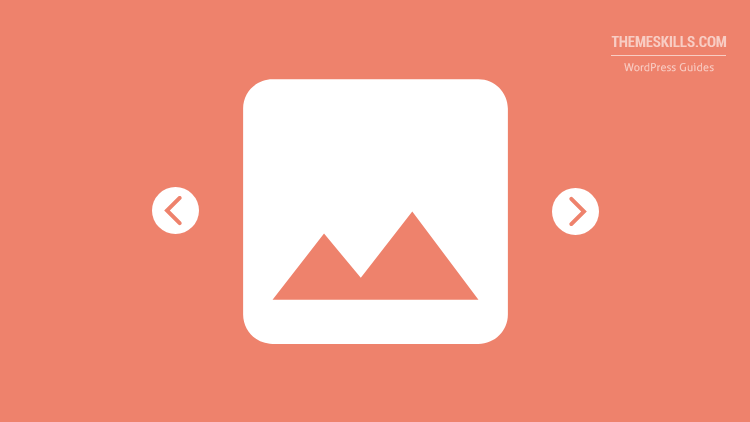Sure, they look all fancy and somewhat professional, but they eventually do more harm than good, therefore they kind of suck!
From what I’ve seen, almost all WordPress themes come along with all kinds of big fancy sliders: layer slider, elastic slider, fusion slider, revolution slider, etc.
Before going “Booo, you suck, they are cool!” on me, let me tell you the reasons why you shouldn’t use sliders and carousels on your WordPress website, then we’ll see.
1. Around 99% of the users don’t interact with a slider or carousel
Just around 1% of users click on a feature. 84% of those clicks are almost always on the first slide.
Think about it… when did you take the time to look/browse all the slides? Not often, or never. If you did click, you probably clicked on the first image you saw.
2. They negatively impact your SEO
- Site speed. They slow down your site’s speed which is a ranking factor included by Google back in 2010. Google recommends that a page should load in 1.4 seconds or less, which is pretty extreme if you ask me, but… that’s that.
- Headings structure. They add additional H1s, leading to multiple H1s on a page, which is bad. A page should only have one H1, the page’s topic (with a keyword in it). If you have 4 slides, you’ll end up with 4 x H1s, therefore, your page will have 4 topics. Does that sound good? Don’t think so…
- Flash usage. Many sliders still use flash, and flash cannot be crawled by all search engines.
3. They negatively impact your conversions
Site speed, again. Site speed doesn’t only affect SEO, but user experience as well! Here are several important statistics:
- 51% of online shoppers in the US say that site slowness is the top reason they’d abandon a purchase. Tweet this
- 64% of smartphone users expect pages to load in less than 4 seconds. Tweet this
- 75% of people would not return to websites that took longer than 4 seconds to load. Tweet this
- 88% of online consumers are less likely to return to a site after a bad experience. Tweet this
- 47% expect a web page to load in two seconds or less. Tweet this
- 40% will abandon a web page if it takes more than three seconds to load. Tweet this
- 14% will start shopping at a different site if page loads are slow, 23% will stop shopping or even walk away from their computer. Tweet this
You can see more statistics here and here.
Your lead-generating content is pushed down, below the fold.
Because the sliders and carousels are so big, they push your lead-generating content below the fold, forcing the users to scroll down in order to find the information they’re looking for.
You have just a few seconds to get the users’ attention, therefore your lead-generating/call-to-action content needs to be the first thing they see, which is hard if they are distracted by the sliders, and also forced to scroll down to look for information.
Distraction. Like I’ve mentioned above, sliders and carousels can distract the users from the important information and call-to-action that’s under.
4. Your message gets diluted
Users get hit by so-called banner blindness, because of all the slides that contain different messages and headings.
Here’s a usability study where a user was given the following task: “Does Siemens have any special deals on washing machines?”. The user failed.
5. Sliders and carousels don’t always work properly on mobile devices
It’s very important for a business to have a mobile ready website because people nowadays do a lot more searching on their mobile devices than desktops (you can find some statistics here).
So, if a slider can mess up your mobile website design, why use it? Did I also mention that it slows down the site and 64% of smartphone users expect pages to load in less than 4 seconds? Yep, I did.
Proper places for sliders and carousels
Sliders and carousels should be used for display purposes, not for converting or just because they look good on your homepage.
You can use sliders for:
- Product images. If you want to display a product, a slider or carousel could come in handy;
- Portfolio. If you want to display your work as a website designer, photographer, painter, etc., sliders and carousels could be helpful.
Even so, if you can find a way to use static images instead, go for that. And avoid using them on your homepage!
Alternative for sliders and carousels
Use a banner, which is basically a stretched background where you can add:
- A good heading with some lead-generating/call-to-action text;
- A good heading with some lead-generating/call-to-action text and a image of your product, for example;
- A good heading with some lead-generating/call-to-action text and a video in which you present your company, product, services, etc.;
Here’s an example of a theme with a nice banner.
Conclusion
After these 5 reasons, you should agree with me that they kind of suck!
If you still consider using sliders or carousels on your WordPress website, think about this: Do you want the best on-page SEO practices for your WordPress site in order to increase your ranking chances, and do you want more users to convert and make more money? Or do you want your WordPress website to have a cool and fancy slider, which is pretty much useless?
If you know more reasons why a WordPress website shouldn’t have sliders and carousels, or you want to convince me that sliders don’t suck, leave a comment.
And don’t forget to share if you enjoyed the post!





If sliders and carousels are detrimental why do so many premium themes and major sites use them?
Even the large Sliders?
So I understand putting a Single Static image or content would be more advisable in the “slider” spot?
A lot of themes use sliders just because they look fancy, pretty, and somewhat professional, and it’s also an easy way out in design. I won’t argue with that, they look nice, but as you can see in the post, they can damage your SEO and conversions, and who wants that?
Also, most designers/developers don’t know SEO well, or don’t really care because a lot of buyers don’t know SEO either; most buy a theme just because it looks nice.
A static image or a banner with some good lead-generating/call-to-action text would be much better.
Although we use a slider, I do quite like the reasons and they do make sense! Nice post :)
:D Thank you!
Sorry – Fumble fingers and I posted twice… Any who … I also use a slider on both of my blogs. As mobile has become so important I am re-evaluating themes to make sure readers see what they need to see. Thank you for the info!
No problem! And yes, you should always check things out, especially after a theme update.
We’re glad that you found the information useful!
Thanks for the advise. Just begin building my new website and have to look in to the slider use a bit more.
I hide my Carousel on Mobiles but they re shown on bigger devices …how does dis affect my website
How can a slider affect your website is already covered in the post.
But it also depends on what plugin you use. Nowadays, some slider plugins have improved and are more optimized.
I’d still disable them on mobile devices, though, as you’re trying to do. If by bigger devices, you mean tablets, then you should search for a slider plugin that will also let you disable it on tablets.
Or you could not use a slider at all :D.